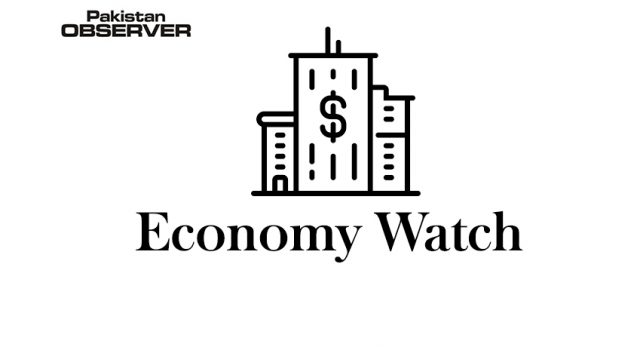Saeed Ahmad
Globally, it has become an admitted fact that peace is a fundamental tool and precondition for sustained economic growth, prosperity and trade of any country or region.
Resultantly, peace while paying back economic growth, its stability would help rise prosperity and subsequently foster peace within two powers or among other landlocked regional countries, in a broad spectrum.
Similarly, an accord, dialogue or talk paves a suitable way to reach any economic or political problems, if it happens in an atmosphere of multilateral approach, openness or of economic cooperation. History while giving the meaningful lesson to nations has revealed that ultimately, peace and prosperity feed on each other, and devastating wars are not a solution for any problem on earth.
Therefore, we should remember how the ‘Great Depression’ created smooth and fertile ground for a devastating war.
Subsequently, today, instead of dwelling on the economic risks, the experts of war and economy had admitted through analysing that the relationship between economic stability and peace was inevitable.
Over the past many decades or so, the global financial crisis has been the subject of multi-debates. Since the invasion of US troops to Afghanistan on October 7, 2001, the War in Afghanistan started.
The United States (US) and its allies in this war successfully finished Al-Qaeda’s operations and its existence, and subsequently the Taliban regime was ousted.
After the removal of the Taliban regime and their setup, the US devised a coalition of over 40 countries, and therefore North Atlantic Treaty Organization (NATO) member countries formed a security mission in Afghanistan which is called International Security Assistance Force (ISAF).
Later, in January 2015, accomplishing multi anti-militant operations in Afghanistan, the NATO forces formulated and launched the Resolute Support Mission (RSM) to equip, assist, train and advise Afghan security forces and their institutions, reveals a ISAF statistics document.
Currently, the number of ISAF forces is around 17,000 troops from 39 NATO Allies and its partner countries, it says.
Likewise, it is also admitted fact that due to the efforts of Pakistan Army who has rendered heavy sacrifices to restore peace in the region particularly in Afghanistan, terrorism has been reduced to incredible level.
Due to the efforts of the Prime Minister Imran Khan, both factions had come out in support of the Intra-Afghan Dialogue, which started at Qatar’s capital Doha in September, 2020. This landmark Afghan peace talk-dialogue is witness and speaks volumes about the Prime minister Imran Khan’s sincere and tireless efforts to reach some conclusion to maintain peace.
Pakistani Prime Minister Imran Khan, in this connection on Thursday, November 19, 2020 visited Afghanistan to help curb violence and push for a ceasefire between the Taliban and Afghan forces.
The salient feature of PM Imran Khan’s maiden visit to Afghanistan is commendable as Pakistan and Afghanistan have agreed on a ‘timeline for actions’ on joint intelligence services-led work.
This ‘work’ would be started against anti-peace elements, a work plan for refugees’ return and further enhancing the regional connectivity.
Both the countries have agreed on a comprehensive document, a Shared Vision between Islamic Republic of Afghanistan and Islamic Republic of Pakistan for promoting and supporting peace and stability in both countries and the wider region.
Senator and Chairman Pakistan-China Institute, Mushahid Hussain Syed told media that since its formulation in 2018, a mutually agreed cooperation framework under Afghanistan-Pakistan Action Plan for Peace and Solidarity (APAPPS) would prove a comprehensive, multi-sector based mechanism for optimising bilateral ties and cooperation.
He said through the document new avenues of prosperity would be opened which would prove a positive move towards regional economic revolution and integration.
Both brother countries should work hand-in-hand to identify and tackle common enemies of peace, irreconcilables and those elements who undermine the valuable peace process, she emphasized.
It may be mentioned here that according to the agreed document ‘timeline for actions,’ by the next month, December 15, 2020, both the countries would be re-establishing the ‘joint intelligence services-led work on mapping, analysing and cooperating against anti-peace elements and those who were trying to undermine the peace process.
Likewise, by January 1, 2021, both the brother countries would formulate a comprehensive joint proposal for the return of Afghan refugees through elevating and intensifying the solution of the issue.
Federation of Pakistan Chamber of Commerce and Industry (FPCCI) president Mian Anjum Nisar while welcoming the Shared Vision document told media that clause (f) of this document was a good omen for the trade of both countries, adding this initiative would provide unprecedented benefits to both countries.
Afghanistan and Pakistan are landlocked and next door neighbours, having huge potential trade markets to benefit both countries, he added.
He said amid Covid-19 situation there was a significant need for Pakistan to boost its exports with neighbouring countries to reduce its trade deficit, and the Prime Minister Imran Khan’s efforts were removing all impediments in the way of the Pak-Afghan trade potential, he said adding Pak-Afghan trade volume was around more than $ 2.7 billion.
To a query Nisar said that Pakistan’s major exports to Afghanistan were cement, oils, ghee, sugar, wheat, poultry products, industrial material, health care equipment, medicines and wood furniture. On the other hand Afghanistan exports fresh and dried fruits, carpets and other perishable items to Pakistan, he said.










